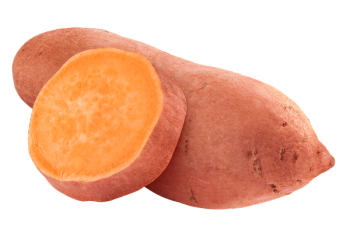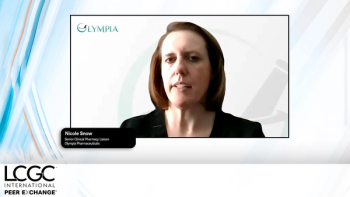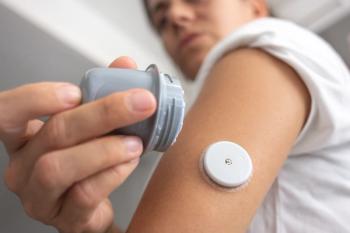
Capillary Electrophoresis
Joining us for a discussion on capillary electrophoresis this month are experts from Beckman Coulter, Agilent Technologies and GlaxoSmithKline.
A technique from the 60s that is undergoing something of a revival, capillary electrophoresis is now finding new and innovative applications offering a number of advantages to analysts.
Janet Kelsey, Electronic Editor, LCGC Europe approached a number of experts in CE and asked them for their thoughts on the current status of the technique and how they perceive its future. Joining us for this forum are Jeff Chapman from Beckman Coulter, Martin Greiner of Agilent Technologies and Kevin Altria from GlaxoSmithKline.
What is the most exciting development in CE at the moment?
Chapman:From my perspective, the most exciting development in CE at the moment involves its interface to electrospray ionization–mass spectrometry (ESI-MS). As a technology, CE is ideally suited as a front-end separation to ESI-MS for the analysis of charged and polar molecules. In one sense this is a perfect match. Both CE and MS separate charged analytes as a function of their mass and charge; while the former is in liquid phase the latter is in gas phase. In this manner, co-migrating analytes tend to be of the same charge state, reducing the effect of ion suppression, which is well known to occur with LC-ESI-MS. As well, CE is inherently a low flow technique, capable of operating with flows as low as 5 nL/min. At these low flow-rates, the efficiency of ESI ionization is at its best, ultimately providing higher sensitivity and better quantification.
Greiner Compound ID out of complex mixtures via CE separation combined with electrospray mass spectrometry, especially with accurate mass TOF or Q-TOF instruments. This is definitely of great interest for a wide range of scientists.CE offers narrow peak widths and high resolution, often just a few seconds wide. This requires rapid MS scanning to provide full spectra. For this reason TOF-MS is the tool of choice providing sufficient data points over a peak, yet still offering full mass range. Since TOF or Quadrupole-TOF (allowing specific preselection of ions and MS/MS fragmentation capabilities), can have very high resolution (eg., 40,000 resolving power), exact masses and isotopic ratios can be determined leading to solid molecule identification.
Altria Paradoxically the most exciting development in CE is something really quite boring…it’s the commercialization of “canned” applications in the form of prepared buffers, test mix and reagents, capillaries and validated operating conditions. The applications may for example include metal ion determination, DNA analysis and profiling of proteins using capillary isoelectric focusing. The users can rapidly set up the method using the kits/capillary and be guaranteed results in the first injection. Users and managers then become accustomed to using the CE instrument and obtaining QA-type results. This boosts usage and confidence in the technique.
Have any drawbacks historically associated with this technique recently been overcome?
Chapman:Yes. One of the inherent strengths yet most significant weakness of CE has been with the sampling of nanolitre volumes. The strength, of course, is in the ability to work with very limited quantities of sample, the weakness ultimately being compromised sensitivity since only nanolitre sample volumes can be loaded. An important breakthough for CE has been the development of sheathless ESI, where the sensitivity achieved not only meets levels generated by LC-ESI-MS but in many cases improves upon them. Coupled with online concentration mechanisms like ITP, immunoaffinity microreactors or even electrokinetic supercharging – CE-ESI-MS is now one of the most highly sensitive and selective analytical techniques available.
GreinerUV sensitivity in CE is limited by the reduced light path of standard capillaries (typically 25-100 µm), as well as by small volume injections (nL range). Sensitivity improvements have been achieved through detector noise reduction in conjunction with extended light path capillaries, which offer 3x or 5x higher sensitivity. Another option are special detector cells where 1 mm and more light path is available.
Altria:Instrument reliability was a problem that was encountered; it resulted in equipment breakdowns that reduced confidence in the use of CE. This area has been addressed through improved instrument designs specifically aimed at addressing these issues. Other instrument improvements have occurred leading to technical improvements in areas such as sensitivity, where CE has struggled. Additionally there has been a steady increase in the number of trained and experienced CE practioners who are able to operate/maintain the equipment, taking care of CE-specific technical issues such as buffer depletion, to deliver routine operations.
Which applications have seen the greatest growth in recent years for CE?
Chapman:In the late 90s and early 2000s it was undoubtedly DNA sequencing, genotyping and gene expression. Today, the growth in CE is being driven by the biotechnology industry, which has adopted CE as a gold standard analytical tool for the determination of purity, heterogeneity and for the identity of therapeutic biologics. CE has been critical in both the research, development and quality control of these life saving medicines.
Greiner:Protein analysis, especially antibodies and glycans attached to antibody structures have seen a growing interest due to a shift in the pharmaceutical industry from New Chemical Entities (NCEs) to New Biological Entities (NBEs).
Are there any application areas that remain to be fully explored by CE users?
Chapman: CE-ESI-MS is only in its infancy in the study of proteomics and metabolomics. Keep your eye on this in the future as we see protein and metabolite coverage dramatically expand with the inclusion of this technology into the arsenal of analytical techniques used. Although CE has been applied for the analysis of single cells, with the recent improvements in sensitivity you may very well see the enablement of a greater number of labs to ask serious questions at a single cell level.
Greiner: Metabolomics is a rapidly growing scientific field, providing a probe to responses of complex biological systems, such as for example humans, to environmental factors and disease states. Since the vast majority of metabolites are small and polar, or even ionic compounds, they are ideally suited to being analysed with CE-TOF MS.Furthermore CE offers to separate and quantify the early eluting compounds not retained in LC systems, without the need for derivatizations as required by GC-MS.
What is the future of CE?
Chapman:Continued growth in the biotechnology industry for the characterization and quality control of therapeutic biologics and therapeutics. The expansion of CE into academia for study of proteomics and metobolomics and its move into the mainstream as a universal front-end to ESI-MS for charged polar analytes (intact proteins, glycans, peptides and metabolites). Moreover, we may very well see CE become the platform for global carbohydrate sequencing efforts on the scale of the Human Genome Project. A prediction yes — but let’s check back in five years.
Greiner:CE applications will make inroads into where LC has weaknesses. The most prominent examples are analysing early eluting ionic, or very polar compounds and small amounts of biomolecules such as very large proteins or nucleic acids. This will be coupled with ready to use consumables kits and methods, which don’t require any CE expert method development knowledge.
Altria:CE is becoming well established in many industries such as biopharmaceuticals where traditional electrophoresis methods are being replaced by CE in QA laboratories. The improved technical performance of the instruments coupled with increased user knowledge/training and canned applications will all lead to increased uptake for existing applications and the spread of CE into new industries. I, therefore, believe that there will an expansion in CE usage in the coming years.
If you are interested in participating in any upcoming Technology Forums please contact Electronic Editor
Newsletter
Join the global community of analytical scientists who trust LCGC for insights on the latest techniques, trends, and expert solutions in chromatography.





